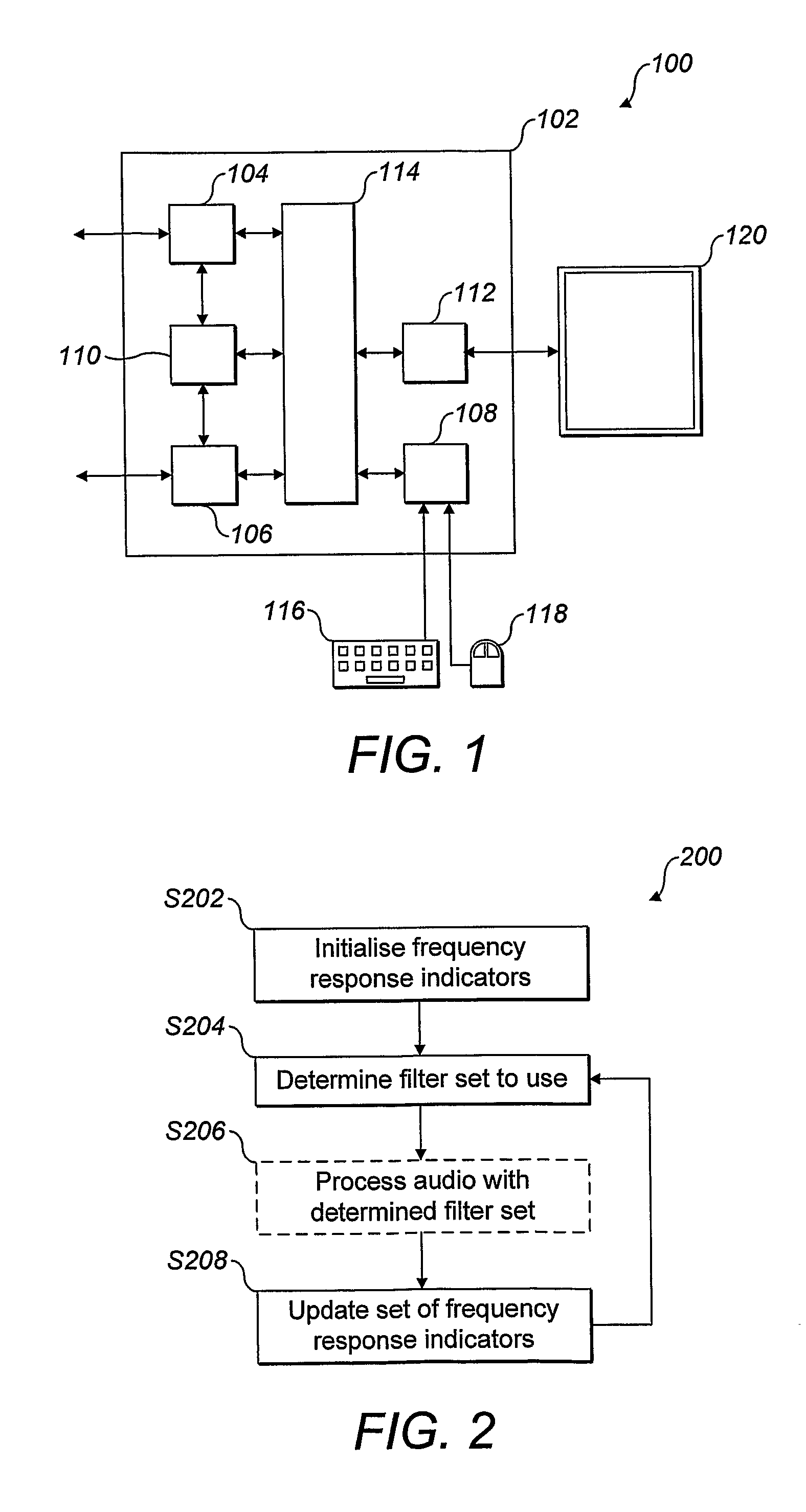Audio processing
a technology for audio processing and audio spectrum, applied in the direction of amplification control, electrical equipment, gain control, etc., can solve the problems of graphic equalizers suffering from a number, parametric equalizers are generally not effective at achieving gentle audio effects across the whole audio band (or spectrum), and graphic equalizers are generally not effective at achieving detailed but essentially arbitrary audio effects for room- or loudspeaker correction
- Summary
- Abstract
- Description
- Claims
- Application Information
AI Technical Summary
Benefits of technology
Problems solved by technology
Method used
Image
Examples
Embodiment Construction
[0065]In the description that follows and in the figures, certain embodiments of the invention are described. However, it will be appreciated that the invention is not limited to the embodiments that are described and that some embodiments may not include all of the features that are described below. It will be evident, however, that various modifications and changes may be made herein without departing from the broader scope of the invention as set forth in the appended claims.
(1) System Overview
[0066]FIG. 1 schematically illustrates a system 100 according to an embodiment of the invention. The system 100 comprises a device 102 that itself comprises an audio interface 104, a data interface 106, a user input interface 108, a memory 110, a graphical interface 112 and a processor 114. The device 102 may be any type of device for carrying out audio processing. For example, the device 102 may be a standard personal computer. Alternatively, the device 102 may be a dedicated audio process...
PUM
 Login to View More
Login to View More Abstract
Description
Claims
Application Information
 Login to View More
Login to View More - R&D
- Intellectual Property
- Life Sciences
- Materials
- Tech Scout
- Unparalleled Data Quality
- Higher Quality Content
- 60% Fewer Hallucinations
Browse by: Latest US Patents, China's latest patents, Technical Efficacy Thesaurus, Application Domain, Technology Topic, Popular Technical Reports.
© 2025 PatSnap. All rights reserved.Legal|Privacy policy|Modern Slavery Act Transparency Statement|Sitemap|About US| Contact US: help@patsnap.com



